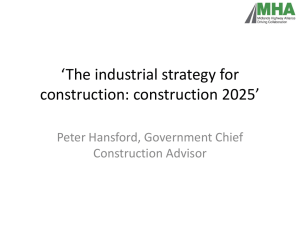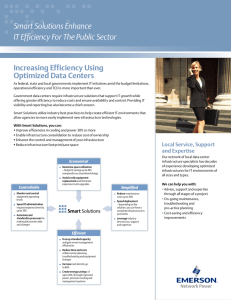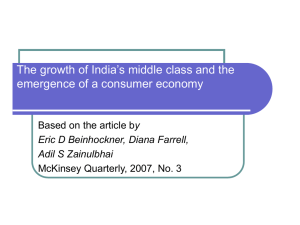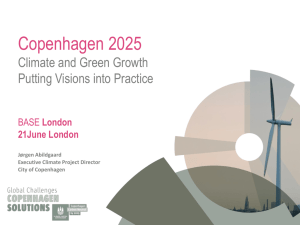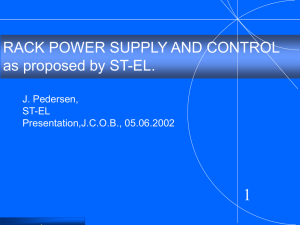Data Center Density: DATA CENTER 2025
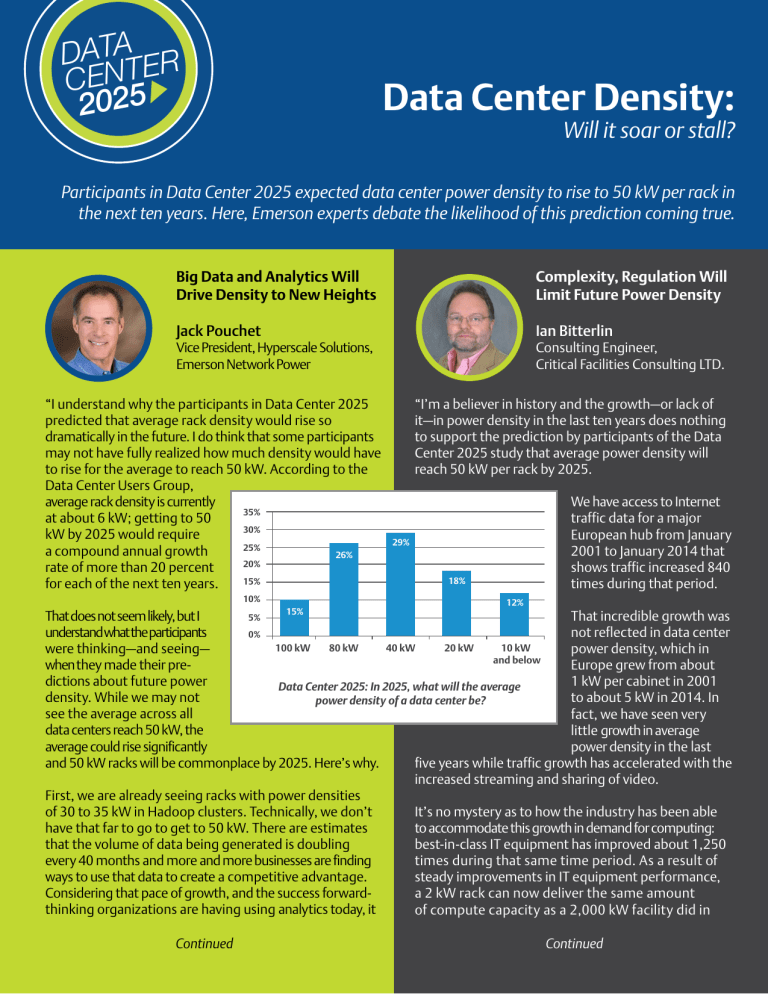
DATA
2025
Data Center Density:
Will it soar or stall?
Participants in Data Center 2025 expected data center power density to rise to 50 kW per rack in the next ten years. Here, Emerson experts debate the likelihood of this prediction coming true.
Big Data and Analytics Will
Drive Density to New Heights
Jack Pouchet
Vice President, Hyperscale Solutions,
Emerson Network Power
Complexity, Regulation Will
Limit Future Power Density
Ian Bitterlin
Consulting Engineer,
Critical Facilities Consulting LTD.
“I understand why the participants in Data Center 2025 predicted that average rack density would rise so dramatically in the future. I do think that some participants may not have fully realized how much density would have to rise for the average to reach 50 kW. According to the
Data Center Users Group, average rack density is currently
35% at about 6 kW; getting to 50 kW by 2025 would require 30%
25% a compound annual growth rate of more than 20 percent for each of the next ten years.
20%
15%
26%
29%
“I’m a believer in history and the growth—or lack of it—in power density in the last ten years does nothing to support the prediction by participants of the Data
Center 2025 study that average power density will reach 50 kW per rack by 2025.
18%
We have access to Internet traffic data for a major
European hub from January
2001 to January 2014 that shows traffic increased 840 times during that period.
That does not seem likely, but I understand what the participants were thinking—and seeing— when they made their predictions about future power density. While we may not see the average across all data centers reach 50 kW, the
10%
5%
0%
15%
100 kW 80 kW
Data Center 2025: In 2025, what will the average power density of a data center be?
average could rise significantly and 50 kW racks will be commonplace by 2025. Here’s why.
First, we are already seeing racks with power densities of 30 to 35 kW in Hadoop clusters. Technically, we don’t have that far to go to get to 50 kW. There are estimates
40 kW 20 kW
12%
10 kW and below
That incredible growth was not reflected in data center power density, which in
Europe grew from about
1 kW per cabinet in 2001 to about 5 kW in 2014. In fact, we have seen very little growth in average power density in the last five years while traffic growth has accelerated with the increased streaming and sharing of video.
It’s no mystery as to how the industry has been able to accommodate this growth in demand for computing: best-in-class IT equipment has improved about 1,250 that the volume of data being generated is doubling every 40 months and more and more businesses are finding ways to use that data to create a competitive advantage.
Considering that pace of growth, and the success forward- thinking organizations are having using analytics today, it times during that same time period. As a result of steady improvements in IT equipment performance, a 2 kW rack can now deliver the same amount of compute capacity as a 2,000 kW facility did in
Continued Continued
is isn’t hard to imagine these clusters growing above 50 kW per rack and becoming a standard component in every decent size IT environment.
Of course, there are some technology hurdles that must be overcome. Managing the heat these hyper-dense racks will create is one of the most obvious—and probably the easiest to solve. The viability of liquid, chip-level cooling to remove heat in racks up to 50 kW has already been demonstrated. Thermal issues will not hold back the development of high-density racks.
We may very well bump into the practical limits of
Moore’s Law. There is speculation that silicon can support the steady advances predicted by Moore’s Law for about another five years—taking us only halfway to 2025. But there are alternatives on the horizon, such as grapheme, that could extend Moore’s Law beyond 2025. New communication architectures may also be required to support high-density racks, but again I have confidence that our industry can find solutions to the technical challenges associated with density.
Servers represent a global market of more than $40 billion annually just in hardware; if there is a demand for more power, the industry will find a way to deliver it.
In addition to the need for high-density to support analytics and high-performance computing, density has inherent benefits from an environmental perspective.
Chip-level cooling eliminates the energy consumed by data center cooling systems and server fans, saving massive amounts of energy and carbon emissions. In addition, the heat captured by liquid cooling systems can be reused to supplement building heating systems, creating additional savings. Finally, in dense urban environments, high-density racks will allow companies to maximize data center capacity in a very small footprint.
2001. That increase in performance, along with increases in utilization enabled by virtualization, improvements in PUE and overall growth in square footage, has allowed the industry to absorb the growth in demand for compute capacity without significant increases in power density.
If there was a strong business case for density we would be seeing it in the market today and we don’t.
In fact, we are seeing high-growth, data centerdependent businesses reducing their technology refresh cycle—bringing in new equipment with the ability to deliver more compute capacity per kW in nine or 12 months instead of every three or four years—as their primary strategy for managing increased demand.
I agree with Jack that technology won’t be a limiting factor—if there is demand for high-density racks technology vendors will solve the technology challenges—but, density hasn’t been embraced as a
solution to IT growth in the past ten years and I don’t expect it to be in the next ten.
If densities were to begin to grow dramatically, I believe that growth would be stymied by government interventions. Governments will be unable to deliver the power required to support average power densities as predicted and will essentially ration power to the industry. Use of alternative energy will grow but simply won’t be able to make up the difference.
Technology vendors that have a financial stake in promoting the benefits of high-density have done a good job of creating the perception that high-density racks are right around the corner. That perception certainly seems to have shaped the input of Data
Center 2025 participants on this question, but it simply does not match reality. Yes, we see high-density racks today in high performance computing applications, and we will continue to see them in the future, but these applications represent about one percent of the market and there is no reason to expect that to grow significantly.
Share this document on:
Downloaded from RickRamos.com
www.EmersonNetworkPower.com
Emerson, Consider It Solved and Emerson Network Power are trademarks of Emerson Electric Co. or one of its affiliated companies. ©2015 Emerson Electric Co.
